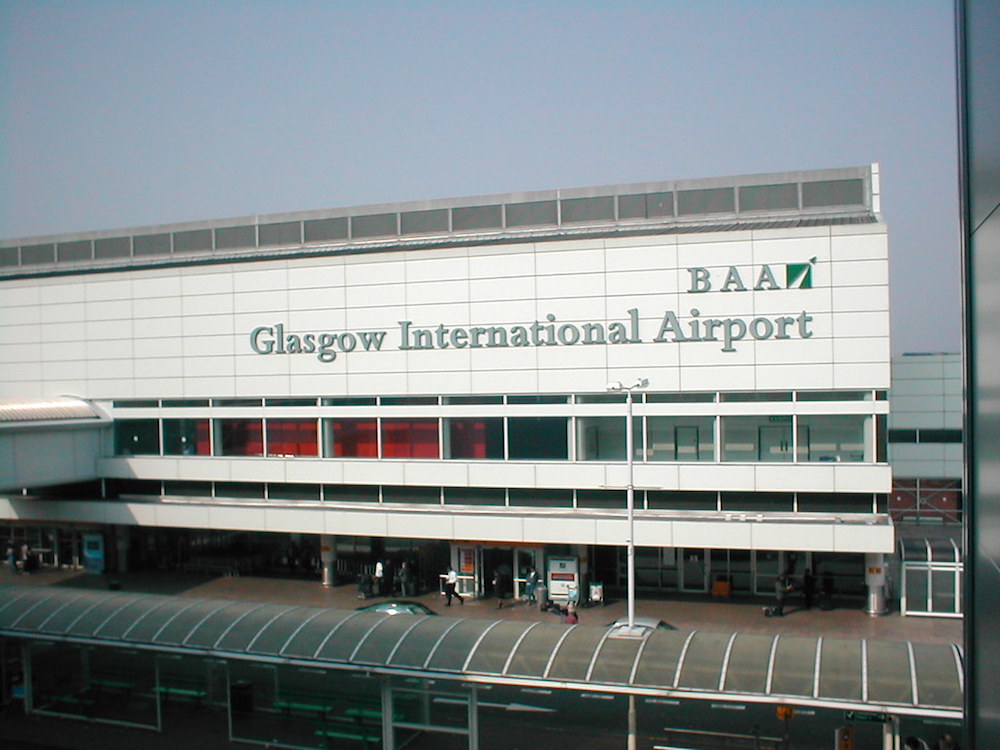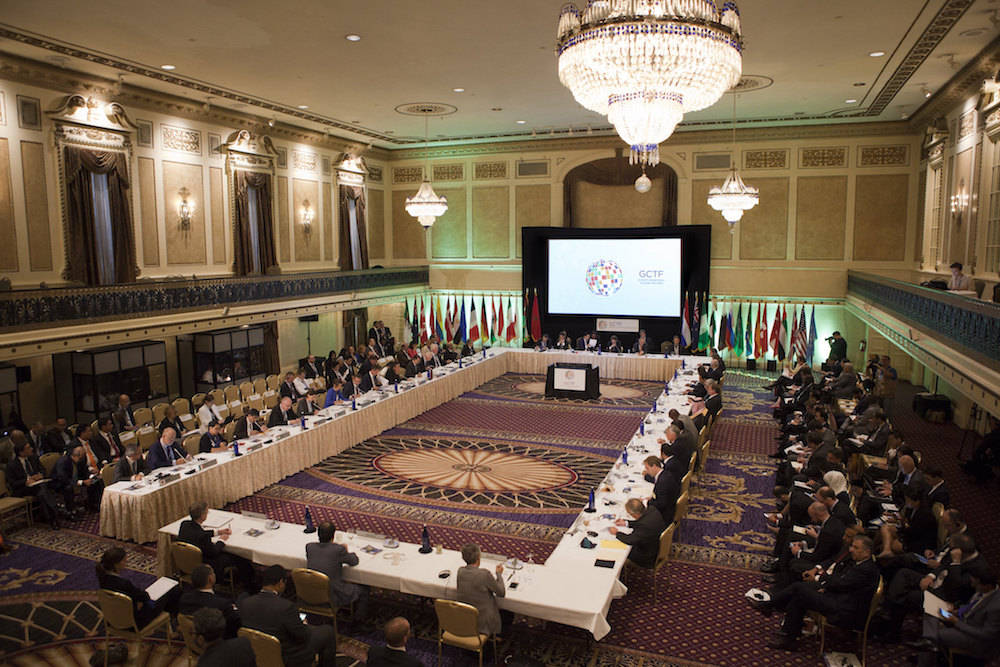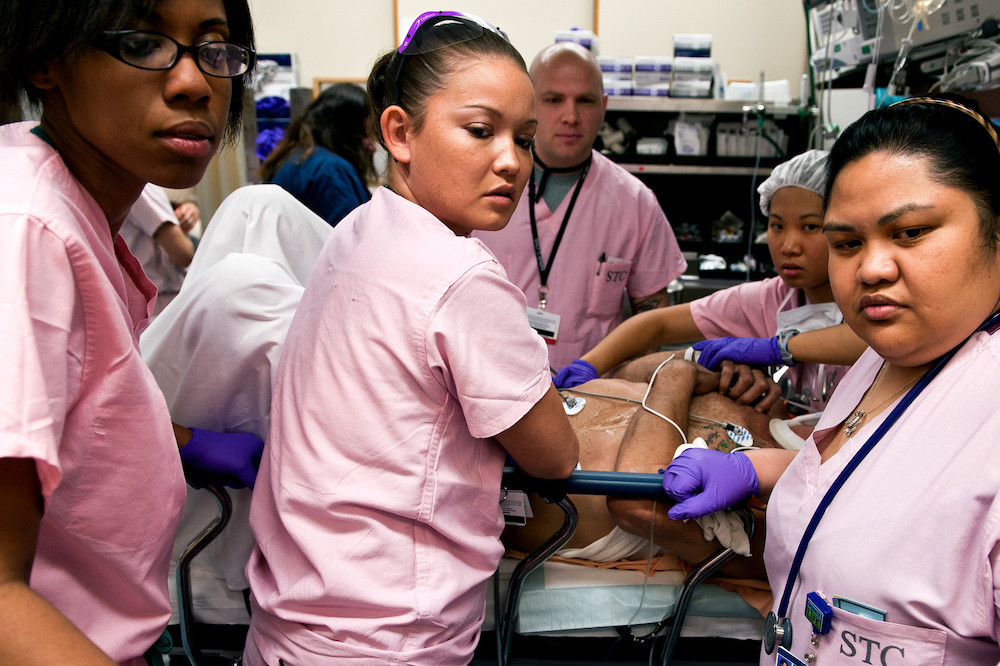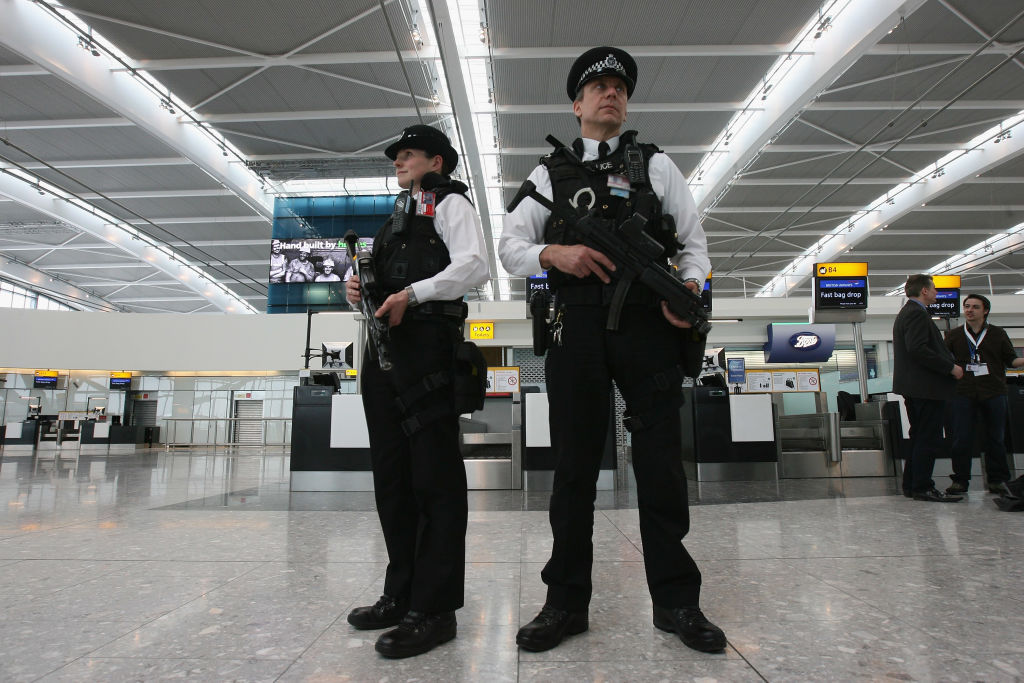The Public Problem With Counterterrorism
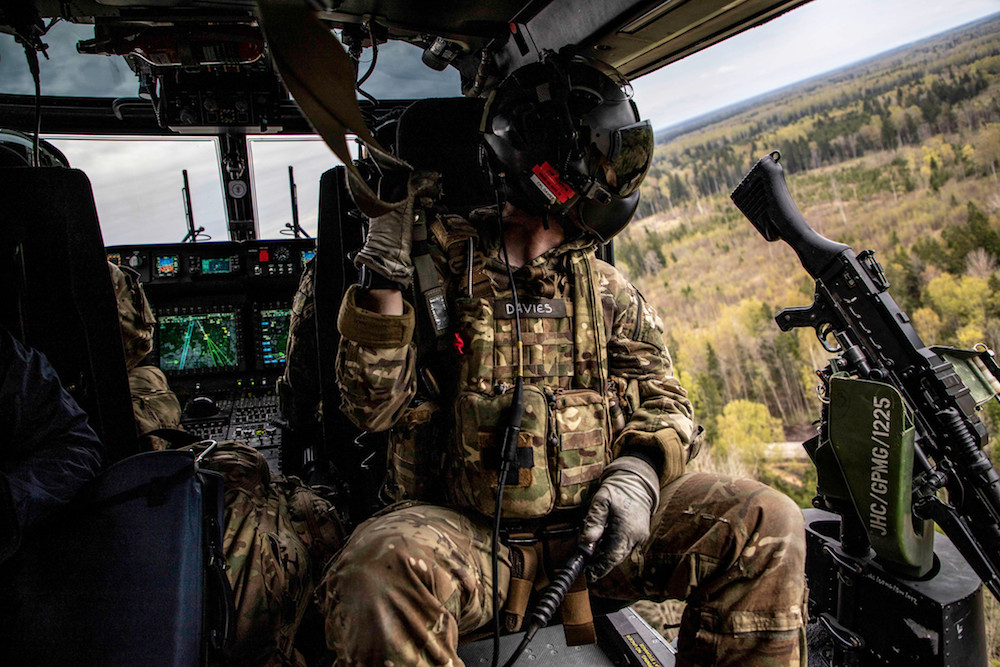
The terrorist attacks on September 11, 2001, scarred Emily’s childhood, even though she watched events unfold from the safety of her home in the U.K. Her parents left her sitting in front of the TV while making frantic calls to relatives in New York. Soon nightmares came, then a paralyzing fear of flying.
In 2007, when her boarding school organized a trip departing from Glasgow Airport, 13-year-old Emily (a pseudonym) resolved to conquer her fear. At 3 p.m. she waited near her check-in desk with hundreds of fellow passengers. Moments later, two men attempted to drive a Jeep Cherokee filled with gas canisters, fuel, and nails into the arrivals hall, but their vehicle failed to squeeze through the doorway. The building shuddered; flame and black smoke filled the air.
People screamed; some ran; others froze to the spot. Not Emily: She composed herself, took her friends by the hand, and led them to safety. On the way to the parking structure, she even paused to reassure a frightened airport official. A real terrorist attack was no match for the girl who had been dreaming of crashing planes, smoke, and flames for years.
Emily’s heroism reveals a gap in the structure of counterterrorism: the lack of information about public behavior during a terrorist attack.
After an incident, police seek eyewitnesses and scan CCTV footage for evidence. Often there’s an inquiry. Were procedures followed correctly? Are greater powers of surveillance needed? The security bureaucracy reconstitutes its injured self. Journalists choose an illustrative story or two. But none of these players extensively study what the public actually does when faced with an attack.
Nobody official spoke to Emily. Indeed, very few members of the public present during an incident are ever officially asked about their experiences. Consequently, we feel that many security measures and systems rely on guesswork: Emergency models run without historical data to support them, and physical designs of buildings—from the positioning of blast-proof structures to the location of emergency exits—rise on sand.
As ethnographic researchers, from 2015 to 2019 we dug deeply into a set of six terrorist attacks to see what we could learn from them. We interviewed dozens of people present during these attacks, including Emily, and studied what the people under attack do before counterterrorism forces arrive. Since 2015, we have been invited to numerous counterterrorism meetings and workshops by police and emergency responders. We have contributed to police training and have even informed regulatory guidelines.
What has emerged is a picture of flawed communication and gaps in knowledge on all sides. Counterterrorism forces are typically disconnected from the people they are trying to protect, and so have missed some fairly obvious safety measures. And the public is often unaware of how their rights—to privacy, or even transparency—may be stifled or abandoned in the interests of protecting them.
After four years of study, and writing the book Getting Through Security: Counterterrorism, Bureaucracy, and a Sense of the Modern, we conclude that the structure of counterterrorism should be rethought. International police and counterterrorism forces often train with each other, but this only widens their distance from the public in whose name they act. Counterterrorism groups may be understood as “secret colleges,” or orders with their own tactics and rules, empowered to deliver death to protect a distant public. Members of the public need to know more about who is protecting them, using what rules and policies, and how they might help protect themselves.
There is a rule of thumb among counterterrorism groups that it will take about 10 minutes from when an attack starts before any kind of armed response can begin, largely because forces need to be notified and brought in, often by helicopter. In that 10 minutes, the public is alone with the attackers—running, hiding, fighting, bleeding, and dying. Golden moments for lifesaving medical intervention come and go. But little can be done, conventional wisdom has it, until order is restored by force. As a result, these 10 minutes have been somewhat ignored, resulting in a major knowledge gap.
We set out to fill that gap. If we knew what happened in those 10 minutes, we thought, perhaps public safety would take precedence over militarized security?
The 1988 attack on Milltown Cemetery, in Belfast, Northern Ireland, was captured on film and has been widely discussed, so we had plenty of material to draw from. The 2007 Glasgow Airport attack was confined to a specific space, so in that case we identified individuals present, like Emily, to interview. The al-Shabab attack on Nairobi’s Westgate Mall in Kenya in 2013 was a dayslong, military-style assault, so we isolated a key area of the mall and interviewed 14 individuals who were there. The firearms attack on a train traveling from Amsterdam to Paris in 2015 was confined to only one carriage, and we interviewed all but two of the individuals on the carriage that day. We also investigated the London Bridge and Borough Market attacks of 2017, and the DusitD2 hotel attack in Nairobi in 2019.
Although remembrance was often difficult, survivors almost always were happy to talk to us. Indeed, some spoke with urgency.
Everyone we spoke to underwent what psychologists call the “oddball effect,” by which memory of extreme experience is recalled in distorted time—a minute is remembered as feeling like an hour. Participants spoke of this and other feelings of unreality. The violence comes in waves, and people’s recognition and understanding of what’s happening tends to come in waves too.
Disaster psychologists tell us that crowds don’t actually panic but rather act in small self-identifying groups. Yet we did find horrifying instances of panic, with parents abandoning children and people standing on each other to gain some perceived safety. It is tempting to try to break down fight-or-flight, freeze-or-fawn, or tend-and-befriend behaviors according to gender or other social distinctions. But the reality is more complex. People move through different physiological and cultural responses.
In the face of extreme and unfamiliar events, many people do strange things. Some stand still to record the events on their phones. This might sound like a reasonable thing to do: to record the events of history as they unfold. Yet people often do this at the expense of any other action, often causing groups to form behind them (trying to see what’s going on), potentially blocking important exit routes. In the moment, people—especially young people—often talk about what movie the scene reminds them of, rather than interpreting it as a dangerous reality.
Our interviews have revealed some simple things that could be changed to improve disaster responses. For example, many people caught in attacks said they wished they knew more about what to do: whether to run or hide, how to flag down aid effectively, and most of all, how to treat bleeding.
People—especially young people—often talk about what movie the scene reminds them of, rather than interpreting it as a dangerous reality.
Many victims of terrorist attacks bleed to death before help arrives. In the November 2015 attack on the Bataclan theater in Paris, for example, the terrorists used assault weapons. As the combat team retook the theater, they first thought that fire sprinklers had been triggered, before realizing that the half inch of liquid on the floor was blood. Undersupplied for so many victims, Paris Fire Brigade crew members resorted to using their own belts as tourniquets.
We advise that there should be cheap and easy-to-use kits, including blood-clotting agents, packing, and tourniquets, in areas or buildings that might be targeted by terrorists, along with training sessions in how to use them for interested members of the public, such as anyone who works at an airport.
We have also learned that, from Belfast to Nairobi, great loss of life was prevented by resilient individuals who kept calm and took action—just like Emily. We advise that airports and other critical infrastructure areas should consider resilience when hiring front-line staff. Hiring people who used to be nurses or fire officers, for example, could help to add valuable skills to areas at risk of attack.
Counterterrorism forces have strongly embedded policies and procedures for how to respond. There are good reasons for this: These forces need to take control of these situations quickly. But by focusing on a militarized response, they often fail to see things more broadly, and unnecessary escalation of violence becomes a possible problem.
During Anders Breivik’s horrifying massacre of 69 young people on Norway’s Utøya Island in 2011, a group of Chechen child-refugees fought back with rocks. When it was over, one teenager stood calmly smoking a cigarette waiting to be interviewed by officials. He was so calm he was mistaken for a culprit and arrested. Helping counterterrorism forces to understand the broad range of human behavior may help to prevent mistakes and unnecessary escalation.
A key finding of our research is that there is too great a distance between the public and those with the stated purpose of protecting them. This gap presents dangers to democracy: If the public isn’t informed about how counterterrorism operates, they aren’t in a position to voice concerns or make their opinions matter.
In 2015, in the wake of the Charlie Hebdo massacre, U.S. and European counterterrorism experts gathered to grapple with the threat of marauding terrorist attacks. With increasing frequency and ferocity, terrorists were attacking “soft targets”: places where the unsuspecting public gathers, such as airports and symbolic city spaces. Over many days, police combat teams, military special forces, and elite medical teams pored over recent events and likely future scenarios.
The group closed its private meeting with a demonstration of the kind of attack that was expected. Politicians, NATO military, national police chiefs, and various other VIPs stood on a raised platform overlooking a fake urban scene, with shops and a gas station, and with individuals and families going about their business. Four men exited a car with assault weapons, and a staged massacre began.
A police car arrived, only to be driven back by heavy fire. Emergency services arrived but could only watch helplessly from a distance. Everywhere, civilian deaths were enacted. A mother hid her children and then attempted to distract the terrorists’ attention. She fell. Eventually, the forces of order arrived: an impressive display of martial prowess involving helicopters and black-clad men, who hunted and killed the terrorists in their turn.
Such joint exercises are about the exchange of knowledge and tactics. But these sessions, undertaken largely in secret, also serve to cement these groups into a kind of club that seems accountable only to the sympathetic officials permitted to watch the displays of prowess. Senior military and government officials from one nation look with jealous eyes at the equipment and training of the others. The emphasis, as we see it, is on competition for impressive force, rather than more directly on effective protection.
Many people do not realize how secret security units operate. After the 2017 London Bridge and Borough Market attack, for example, the mayor of London promised a return to normality. We surveyed the area, interviewing shopkeepers and bar staff, and saw an urban quarter healing as best it could. Members of a visible, unarmed community police unit wandered about. But there were also, unknown to many, armed police just a few minutes away. And if all other measures fail, a blue Dauphin helicopter with a team of heavily armed Special Air Service operators can always be called upon to intervene.
The public cannot consent to actions taken in the shadows. This is true of armed force, and it is also true of the myriad surveillance measures that are taken not only at airports and other critical infrastructure sites, but also increasingly in public and formerly private spaces. These measures may reduce the autonomy of the citizen, upon which any democratic society relies.
Of course, there are reasonable justifications for secrecy in security measures, most obviously to prevent would-be attackers from working around them. But our work questions the overall structure in which decisions are made. Making a difficult decision to protect the public is one thing, but refusing to inform the public in case your decision is challenged would be quite another. With all the secrecy surrounding these agencies, it is hard to tell the difference.
Anthropologists like us can do more than make practical suggestions for public safety or offer political critique from a safe distance. One of the strengths of ethnography is the enabling of conversations. Societies should all talk more about the responsible use of counterterrorist force. Security forces and terrorists are locked into a deadly game in which ordinary people are to be killed, protected, or sacrificed.
The game is played all around us, but not in the open. Work like ours can help us understand the rules of the game so those rules can be changed, broken, or endured, as need be.

































